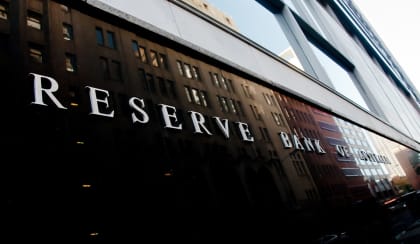The $14k sting for variable rate borrowers
New research reveals the toll of the Reserve Bank’s rate hikes, with variable-rate mortgage holders paying an extra $1,000 a month since mid-2022.

The study, conducted by researchers from UNSW Sydney, the e61 Institute, University of Sydney, and University of Chicago, collated data from 83,321 individuals between November 2020 and April 2024.
The research found that variable-rate mortgage holders paid $13,884 more in repayments than fixed-rate mortgage holders over the 18 months following interest rate rises.
During this period, interest rates rose from 0.10 per cent in November 2020 to 4.35 per cent as of April 2024.
The rate hike cycle that began in May 2022 reached its peak in November 2023, remaining unchanged at 4.35 per cent until the 25-basis-point cut in February 2025.
This period of inflated interest rates placed immense strain on borrowers, especially those who were on a variable rate.
As of March 2019, 23 per cent were on a variable rate, while 77 per cent were on a fixed rate.
Variable mortgage holders climbed to 45 per cent as of March 2021, while fixed dropped to 55 per cent, just before the RBA rate hike cycle commenced.
As of March 2025, variable makes up 11 per cent of the total, while 89 per cent are on fixed rate terms.
Despite the added strain placed on borrowers, the study found that spending habits between fixed-rate mortgage holders and variable rate were hardly changed.
The increase in mortgage repayments was funded by savings by the majority of borrowers (70 per cent).
Just 26 per cent paid for the increased mortgage repayments with additional income streams.
The rate hike cycle also limited the number of people making excess mortgage repayments.
The research revealed that 70 per cent of variable-rate borrowers were making excess mortgage repayments before the rate hike cycle.
As of the end of the study in April 2024, this dropped to around 25 per cent.
According to Dr Nalini Prasad, co-author of the research and senior lecturer in the School of Economics at UNSW Business School, this research emphasises the spending habits of borrowers and is something that the RBA should be aware of when determining the cash rate.
She said that interest rate movers affect the cash flows of variable-rate customers dramatically. With spending largely remaining the same for these borrowers, she said the RBA “will need to push more strongly on the monetary policy lever.”
Prasad said the rate hikes experienced in Australia were the “most synchronised increase in interest rates across developed countries over the past 50 years”.
“These interest rate increases were designed to reduce inflation through restraining household spending. It is thought that monetary policy is more powerful in countries with more variable rate mortgage debt, like Australia,” said Prasad.
“Here, changes in interest rates lead to immediate changes in mortgage repayments. However, we show that when mortgagors have accumulated savings, spending does not need to fall after interest rates rise.”
The researchers said that an important feature of variable-rate mortgage is the ability to “accumulate liquid wealth” through excess repayments, without servicing costs.
The study concluded that future rate moves could have a more pronounced effect on consumer spending and urged the central bank to consider this in its meetings.
